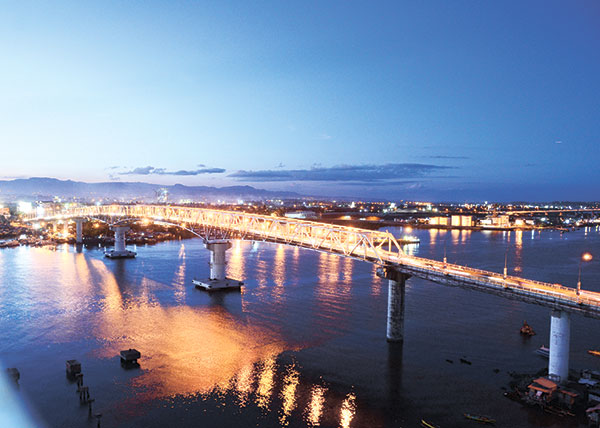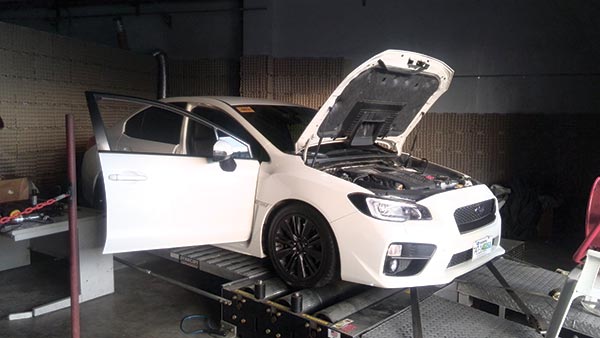Tuning modern engines
 Atty. Jerome G. Neri
Atty. Jerome G. Neri
The Scrutineer
I FINALLY did it. I was able to tune the 2014 Subaru Forester XT. This SUV has the same engine as the Subaru WRX that has been tuned by the factory to 248 brake horsepower (bhp). On the Dynamometer, the Subaru Forester had 174.9 wheel horsepower, which is what is measured on the dynamometer. Wheel horsepower is always lower that brake horsepower due to power transfer loses from the engine to the gearbox then to the wheels and frictional loses.
Unlike older Subaru models where I have the software and hardware capable of reprogramming the factory engine control unit (ECU), on this new one, I had to install an auxiliary engine control unit that is compatible and works with the factory engine control unit. The auxiliary engine control unit is also capable of data logging the important engine parameters such as airflow, fueling, ignition timing, intake air temperature, water temperature and many more.

After the initial baseline run, I did an analysis of the data and programmed the auxiliary engine control unit accordingly, making sure that there is no fuel knock and excessive exhaust gas temperatures. After two hours of data logging and optimizing the tune of the Forester, I ended up with 228.9 wheel horsepower. This is a 30 percent increase in wheel horsepower that translates to 322 brake horsepower for the Subaru 2.0 direct injection turbo engine.
It seems to me that modern engines are capable of delivering a lot of horsepower and are just tuned down by the manufacturers. With the 30 percent increase in power, the air/fuel ratio is still a very conservative and rich 10.8:1, where the accepted and most used air/fuel ratio by most tuners is 11.7:1. Setting it on the rich side gives a bigger safety margin in terms of engine reliability. Driving the Subaru Forester after the tune, I immediately felt a massive improvement in throttle response – the car just goes.
I’ve seen people spend tons of money on bolt-on upgrades, such as exhausts and intakes, and yet they do not see any significant power improvements. The reason for this is that the engine control unit was not programmed by the manufacturer for those upgrades. In order to make the upgrade work, an engine control unit tune is in order. There are some engine control units that are programmable and others need an auxiliary engine control unit.
For cars such as the 2014 Subaru Forester XT where the software and hardware needed to reprogram the engine control unit is hard to get at a reasonable price, auxiliary engine control unit would be a good first upgrade as opposed to bolt-on upgrades that really do not deliver the power gains unless the engine control unit is reprogrammed. An auxiliary engine control unit would set one back by about P60,000 pesos, inclusive of installation and tuning.
SPEED LIMIT. The speed limit it the SRP coastal road has been reduced from 60 kph to 30 kph. The reason behind this is that there is an average of 200 accidents in the SRP coastal road per year. The SRP coastal road needs a speed limit and it should be a minimum speed of 60 kph and a maximum of 100 kph. Just look at how the road was designed. This road was not intended to have vehicles running at crawling pace.
The alarming number of accidents in the SRP is not because of speed. The main culprits are incompetent drivers and non-roadworthy vehicles. This is the main problem and instead of addressing it, our local government decides to take the easy and lazy way out: slow everybody down. I have a better idea, close the SRP coastal road permanently and there will be zero accidents.
REROUTING. I also have to give credit where credit is due. The new rerouting in the Banilad-Talamban road seems to be working. There is a lot less traffic. This is the best scheme so far for this area where going Talamban, the jeepneys have to go through the side road going to Cempark and on the opposite way the jeepneys have to go through Gaisano Country Mall.
Our new Citom chairman Victor Caindec has started a campaign to keep all junction boxes free, as it is supposed to be. Let us all support it. By giving way at junction boxes, traffic will be lessened.



